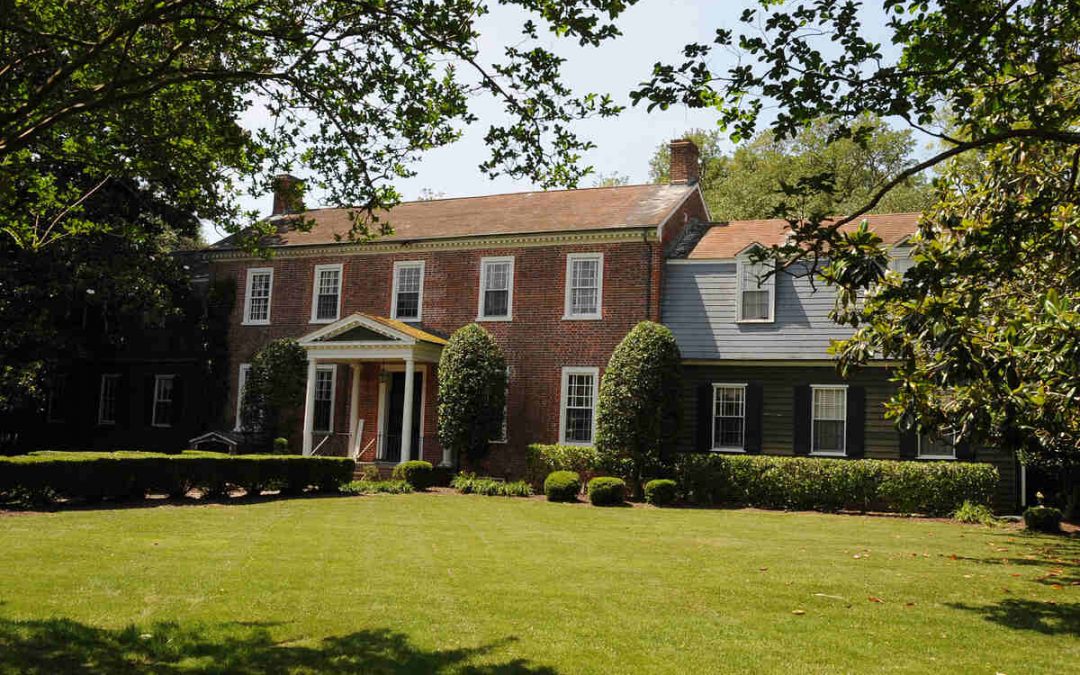If you take long walks or bike rides in First Landing State Park, you can’t help but admire over 550 miles of luscious greenery. It might give you the urge to spruce up your backyard with new native trees, shrubs, or flowers. However, it may surprise some that not every plant native to Virginia is native to this coastal city. This article will help you explore the best native plants for Virginia Beach, along with their attributes, such as water and sun exposure needs.
Native plants provide significant benefits, such as boosting the local ecosystem, attracting beneficial insects and pollinators–– even helping some endangered butterfly species fight for survival.
In this article
- Butterfly Milkweed
- Cardinal Flower
- Inkberry Holly
- Fall Phlox
- Eastern Redbud
- Sweetbay Magnolia
- Trumpet Honeysuckle
- Smooth Alder
- Virginian Witch Hazel
- American Beautyberry
- How to Choose Native Plants for Your Virginia Beach Landscape
- FAQ About Native Virginia Beach Plants
- Where to Find Native Virginia Beach Plants
10 Best Native Plants for Virginia Beach, VA
1. Butterfly Milkweed (Asclepias tuberosa)
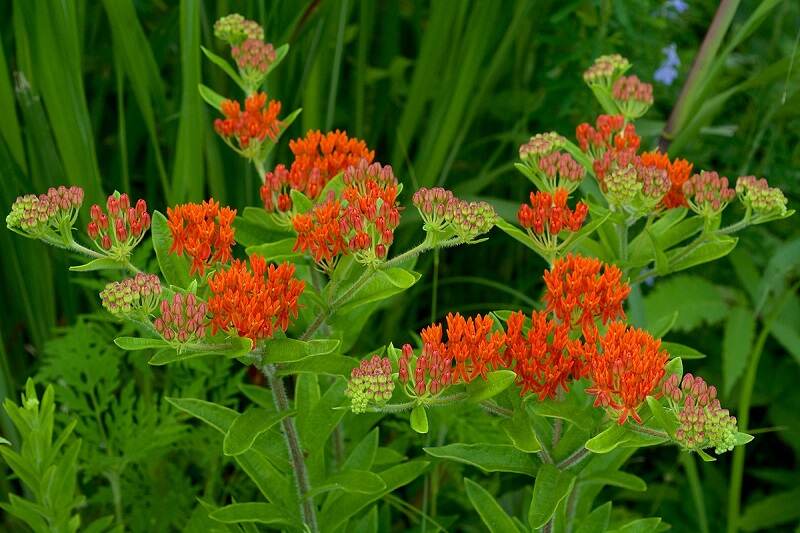
Photo Credit: Eric Hunt / Wikimedia Commons / CC BY-SA 4.0
Unlike many other milkweeds, this bushy perennial has no milky sap. Butterfly milkweed has clusters of bright orange to yellow-orange flowers that bloom throughout the summer. These flat, umbel flowers produce seed pods in the fall. Butterfly milkweed grows naturally in canyons, hillsides, prairies, and open woods. In addition to working great as cut flowers, this native plant is a suitable choice for cottage or butterfly gardens.
A great nectar source for birds and insects, butterfly milkweed is critical to the survival of monarch and zebra swallowtail butterflies. So when working on your new landscape, consider this plant to help reverse their fortune.
Plant type: Perennial herb
USDA Hardiness Zone: 3-9
Sun: Full sun
Soil: Clay, loam, sand
Duration: Perennial
Fragrance: Vanilla
Bloom time: May – September
Water needs: Low
Mature height: 1 to 2 feet
Potential hazards: Toxic to dogs, cats, and horses
2. Cardinal Flower (Lobelia cardinalis)

Photo Credit: rockerBOO / Flickr / CC BY-SA 2.0
Cardinal flower is a popular, upright perennial that can add a vertical interest to the landscape. This native plant’s boasting flower spikes are densely packed with cardinal red, two-lipped blossoms that bloom from midsummer to early fall. Cardinal flower may self-seed in ideal growing conditions, and fortunately, is not an invasive plant.
It can easily thrive in cottage, wild, and butterfly gardens. This beautiful native flower is a magnet for beneficial insects and hummingbirds.
Note: Ingesting this plant may cause discomfort.
Plant type: Flower
USDA Hardiness Zone: 3-9
Sun: Full sun, part shade, full shade
Water needs: Medium to high
Soil: Sand, loam, clay, limestone-based
Duration: Perennial
Mature height: 1-6 feet
Potential hazards: Ingesting this plant may cause discomfort.
3. Inkberry Holly (Ilex Coriacea)
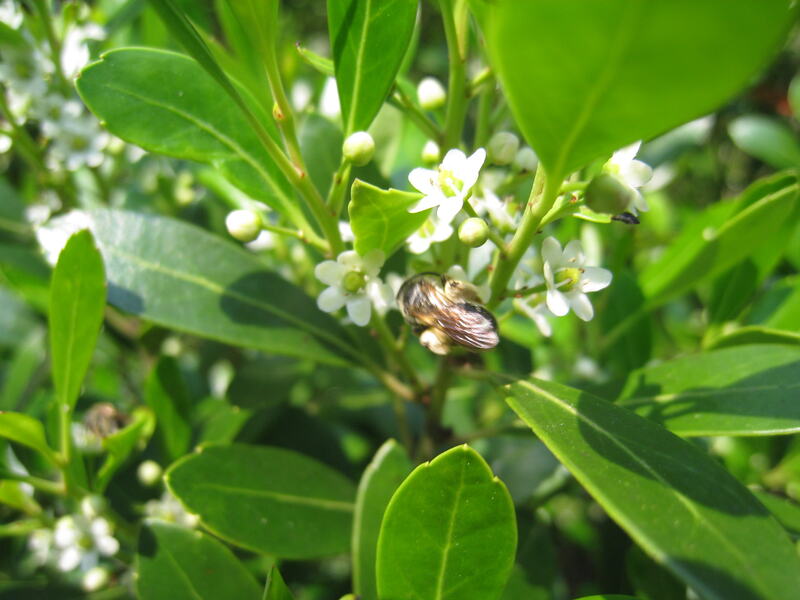
Photo Credit: Elsa Spezio / Flickr / CC BY-SA 2.0
Inkberry holly is a dioecious, slow-growing broadleaf shrub that is easy to grow. The name ‘inkberry’ comes from the dark fruits this native plant produces. Female plants need a male pollinator to produce these fruits. Inkberry holly has smooth leaves, distinguishing it from other common hollies found in nature. This versatile plant can thrive around landscape ponds or water features, and can be used to form shrub borders.
It is important to note that the leaves and berries can be toxic to humans and pets.
Plant type: Shrub
USDA Hardiness Zone: 6-9
Sun exposure: Full sun, partial shade
Soil: Clay, loam, sand
Water: High
Bloom time: March – April
Plant type: Shrub, small tree
Mature size: Up to 15 feet tall
Potential hazards: Ingestion may cause diarrhea, vomiting, and other illnesses in humans
4. Fall Phlox (Phlox Paniculata)
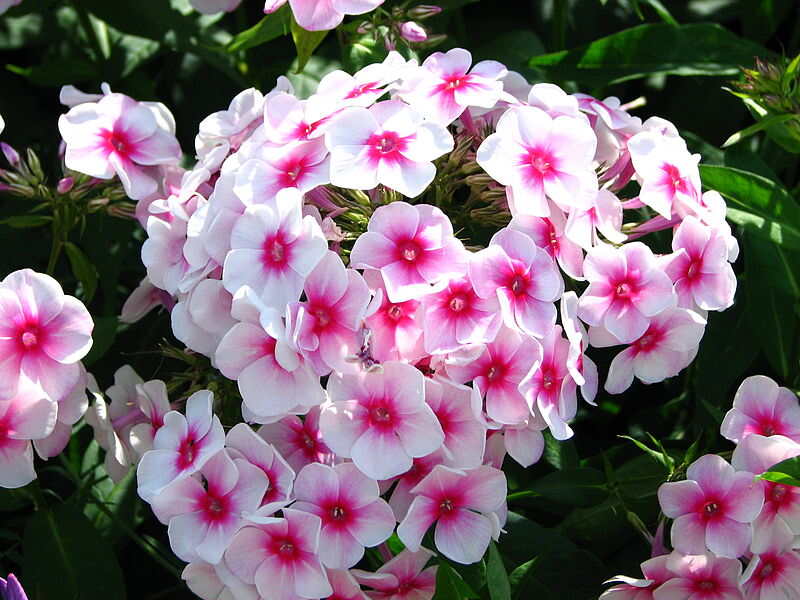
Photo Credit: Kor!An (Корзун Андрей) / Wikimedia Commons / CC BY-SA 3.0
With many visually stunning colors, the fall phlox is a popular choice among homeowners. It may be planted in groups, perennial borders, or single specimens. Fall phlox has a stout, smooth stem that holds narrow leaves. The sweetly fragrant flowers can bloom throughout the summer until early fall. Just to add further beauty to your garden, the blossoms sway attractively in the breeze. Garden phlox, a common name for this perennial, attracts bees, butterflies, and hummingbirds.
This native plant needs good air circulation to grow and thrive. During the hot summer months, consider adding mulch to keep the root area cool.
Plant type: Flower
USDA Hardiness Zone: 4-8
Sun exposure: Full sun, partial shade
Soil: Chalk, clay, loam
Water needs: Average
Fragrant: Pleasant sweet scent
Bloom time: June – October
Mature size: 2 to 4 feet
5. Eastern Redbud (Cercis Canadensis)
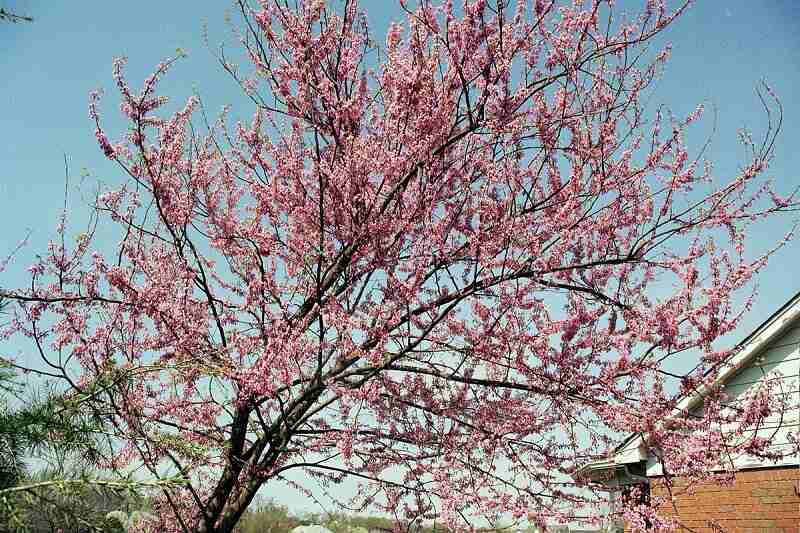
Photo Credit: BETTY / Wikimedia Commons / CC BY 2.0
Also known as the ‘Ace of Hearts’, the eastern redbud is a deciduous tree with a dome-shaped canopy. It is aesthetically pleasing, and can add elegance to gardens or other outdoor spaces. It has a foliage of heart-shaped, dark green leaves that turn shades of yellow in the fall.
Dark red flowers cover the unique and irregular branches in the spring. These cheerful blossoms are on display for 2 to 3 weeks. Attracting birds and butterflies, eastern redbud can be used for shrub borders or as a specimen plant.
Plant type: Shrub, tree
USDA Hardiness Zone: 4 – 9
Sun exposure: Full sun or partial shade
Soil preferences: Any moist, well-draining, nutrient-rich soil
Water needs: Average
Bloom time: March – May
Foliage: Deciduous
Mature size: 20 – 30 feet tall with a 25 – 35 foot spread
Potential hazards: Contains the toxin saponin but isn’t considered toxic because it usually doesn’t cause harm when ingested
6. Sweetbay Magnolia (Magnolia Virginiana)
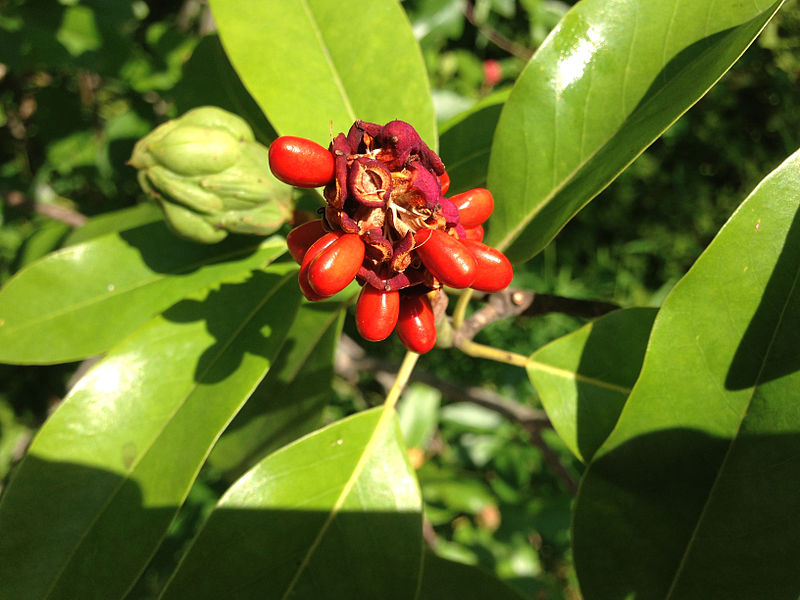
Photo Credit: Famartin / Wikimedia Commons / CC BY-SA 4.0
The sweetbay magnolia is a slow-growing plant that can be grown as a slender tree or as a multi-stemmed shrub. It has solitary, lemon-scented, white flowers that appear in late spring and bloom sporadically throughout summer. As part of its handsome foliage, this native plant produces cone-like fruits with bright red seeds. Sweetbay magnolia is known to attract birds, making it another beneficial plant for the local ecosystem.
Plant type: Shrub, tree
USDA Hardiness Zone: 5-10
Sun exposure: Full sun, partial shade
Soil: Clay, loam, sand
Fragrance: Lemon-scented
Water needs: Average
Bloom time: April – July
Mature size: 10 to 35 feet
7. Trumpet Honeysuckle (Lonicera Sempervirens)
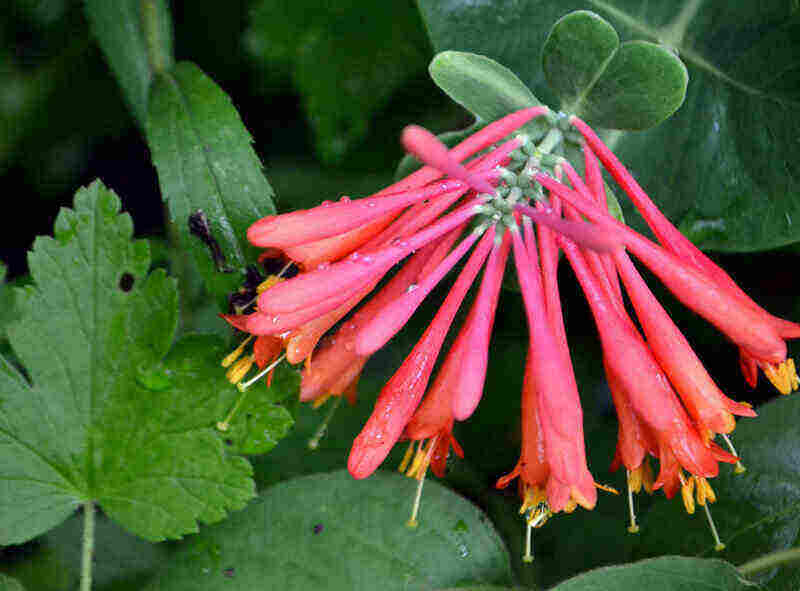
Photo Credit: Jo Naylor / Flickr / CC BY 2.0
Trumpet honeysuckle is a medium-sized, semi-evergreen climber with tubular flowers that open to reveal yellow throats, mainly produced from early spring to early summer. These flowers will give way to bright red berries in late summer to early fall. Trumpet honeysuckle will happily cover fences, walls, and even pergolas for a pretty display. One of the showiest of the vining honeysuckle, this species attracts bees, hummingbirds, and butterflies.
Fun fact: The leaves make a decoction for sore throats and coughs.
Plant type: Climber
USDA hardiness Zone: 4-9
Sun exposure: Full sun, part shade
Soil: Chalk, clay, loam, sand
Water needs: Low, average
Bloom time: March – June
Mature size: 8 to 15 feet
8. Smooth Alder (Alnus Serrulata)
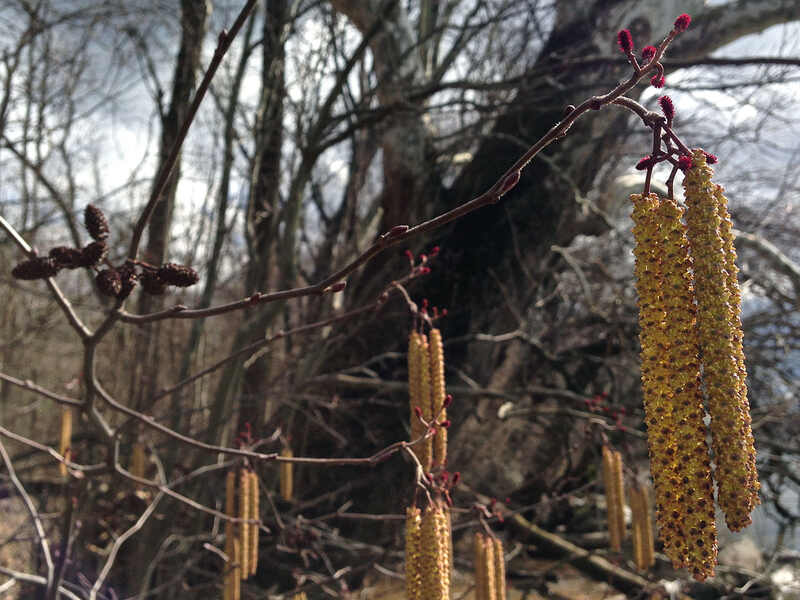
Photo Credit: Fritzflohrreynolds / Wikimedia Commons / CC BY-SA 3.0
Smooth alder, with its densely branched canopy and multi-stemmed trunks, can be planted as either a deciduous shrub or small tree. It has a foliage of glossy green leaves that turn yellow-brown in the fall. However, its most distinctive feature can be seen in early to mid spring. During this period, the long, pale yellow male catkins dangle like Christmas decorations near the bore branch tips. In turn, the catkins release pollen that attaches several insects.
Alders support 255 species of caterpillars, and can provide food and shelter for wintering, breeding, and migrant birds. All of these positives make the smooth alder a terrific addition to your Virginia Beach landscape.
Plant type: Shrub, tree
USDA Hardiness Zone: 4-9
Sun exposure: Full sun, partial shade
Soil: Clay, loam, sand
Water needs: Average, high
Bloom time: March – April
Mature size: 10 to 20 feet
9. Virginian Witch Hazel (Hamamelis Virginiana)
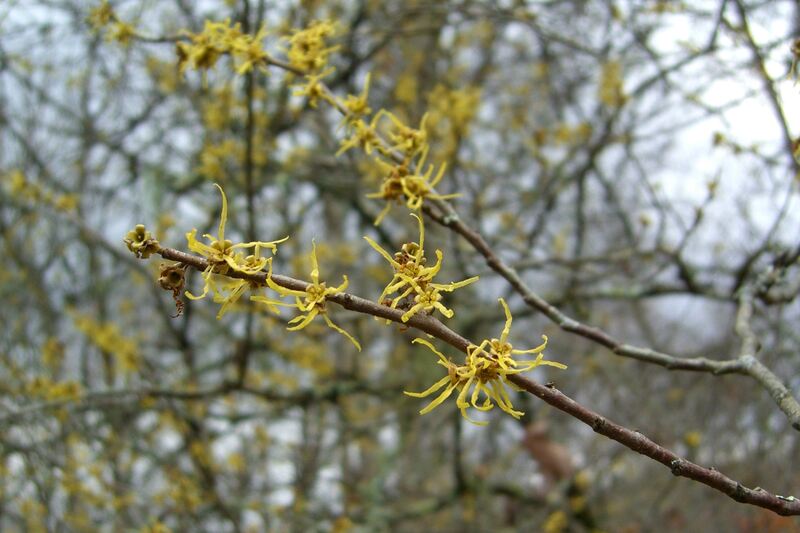
Photo Credit: Jason Hollinger / Flickr / CC BY 2.0
Similar to the smooth alder, the Virginian witch hazel can thrive as a deciduous shrub or small tree. It has sweetly-scented, pale yellow flowers that bloom in fall and early winter. Each flower consists of 4 golden ribbon-like petals. The smooth, broadly oval leaves will turn yellow in the fall, providing you with a colorful fall foliage. Overall, the Virginian witch hazel is a great addition to your native plant landscape.
Fun fact: this is the species from which medicinal witch-hazel extract is made.
Plant type: Shrub, tree
USDA hardiness Zone: 3-8
Sun exposure: Full sun, partial shade, shade
Soil: Clay, loam, sand
Water needs: Average
Bloom time: September – December
Mature size: 15 to 20 feet
10. American Beautyberry (Callicarpa Americana)
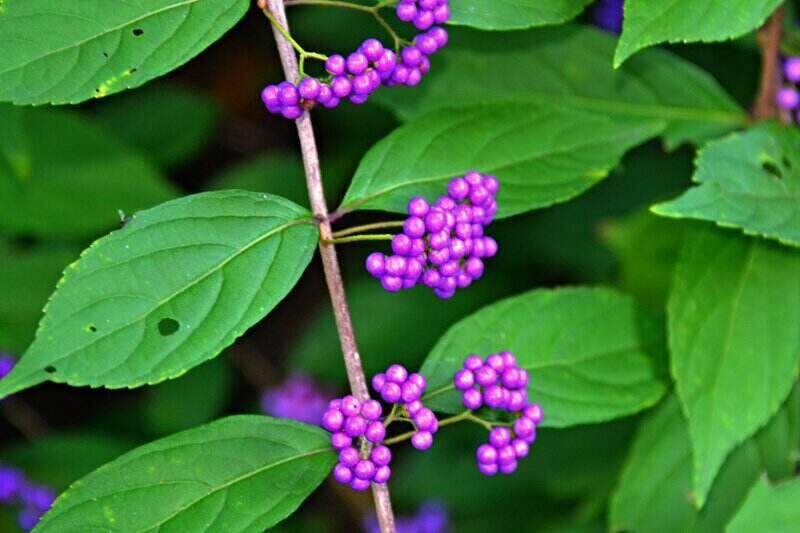
Photo Credit: Tony Alter / Flickr / CC BY 2.0
With its showy flowers and fruits, American beautyberry is another popular choice among homeowners. It is easy to grow and perfect as a specimen plant in your backyard. The best fruit production occurs when the shrubs are planted in groups. These showy berries may persist even after the leaves have fallen, and will most probably be devoured by hungry birds. To encourage flowering, consider pruning the stems in late winter to early spring.
Plant type: Shrub
USDA Hardiness Zone: 7-11
Sun: Full sun to partial shade
Soil: Loam, Sand
Duration: Deciduous perennial
Fragrance: Citrus
Bloom time: Summer
Water needs: Low
Mature height: 4-8 feet
How to Choose Native Plants for Your Virginia Beach Landscape
Virginia Beach, part of the Hampton Roads metropolitan area, lies in USDA Plant Hardiness Zone 8. You should consider this before planting any new flowers, shrubs, or trees in your backyard. Additionally, professional gardeners and landscapers use this information to avoid planting non-native plants that will neither thrive nor benefit your local environment.
The type of soil, exposure, and water needs are some of the major attributes you should always double-check on. If your landscape has the wrong type of acidic soil, is too shady, or suffers from harsh winters, even Virginia-native plants that cannot withstand such conditions may fail to establish themselves.
FAQ About Virginia Beach Native Plants
What fruit is native to the area?
Pawpaw is one of the largest edible trees in North America. Not only is it relished by us humans, but by many species of wildlife such as deer and raccoons. The pawpaw tree does not have distinguishing features, so you may end up walking past one without even noticing!
The next time you’re walking around the local woods in late summer or early fall, keep an eye out for this tree and enjoy its fruit when it is just ripe.
What are some plants you should avoid in your Virginia Beach backyard?
Believe it or not, there are some plants that grow all too well in the area. They grow so well that they are deemed invasive and damaging to your property. Growing Virginia-native plants is not just about boosting the local ecosystem, but also about preventing non-native species from invading the native ones or damaging your property.
According to the Virginia Department of Forestry, these are some of the worst invasive plants that you should avoid or help get rid of:
- Kudzu
- Japanese Stiltgrass
- Autumn Olive
- Multiflora Rose
- Oriental Bittersweet
- Japanese Honeysuckle
Visit the homepage of Virginia Native Plant Society at vnps.org to learn more about invasive plants, cultivars, and hybrids of native plants in Virginia Beach.
What is the most poisonous plant in the area?
The name might already sound familiar to most of you. The poison hemlock is arguably the most dangerous plant in Virginia Beach, if not all of North America. It is a highly toxic biennial with an unpleasant smell. The symptoms can start to appear rather quickly, and simply touching the plant can be enough to poison both humans and animals. All parts of the plant are dangerous, and symptoms can range from vomiting to seizures to respiratory failure.
You should be extremely careful around this plant, as there is no antidote for hemlock poisoning. If you spot one in or around your property, you can contact local professionals to safely get rid of it.
What other plants are native to Virginia?
Virginia has several native plants. To learn more about plants native to Virginia’s Capital Region, Northern Virginia, and Southeast Virginia, visit our guide to Virginia’s native plants.
Where to Find Native Virginia Beach Plants
Mother nature is the obvious place to begin. You can spot native plants in the local woods, and sometimes near your own property. The second option is to look for nurseries or wildflower centers that specialize in selling native plants. Additionally, these local nurseries or centers can provide you with plenty of useful tips on how to maintain your native plant garden.
Below are some plant nurseries and garden centers in Southeast Virginia where you can find native plants:
- Virginia Native Plant Society South Hampton Roads Chapter
- Wild Woods Farm
- Anderson’s Greenhouse
- McDonald Garden Center
- Bennett’s Creek Nursery
Keep your yard in tip-top shape so your native plant garden can shine. If you feel more comfortable hiring pros, contact a local lawn care professional who can maintain the yard’s hedges, turfgrass, and autumn leaves.
Main Image Credit: GREEN HILL, VIRGINIA BEACH, VA / JERRYE & ROY KLOTZ, M.D. / Wikimedia Commons / CC BY-SA 4.0

